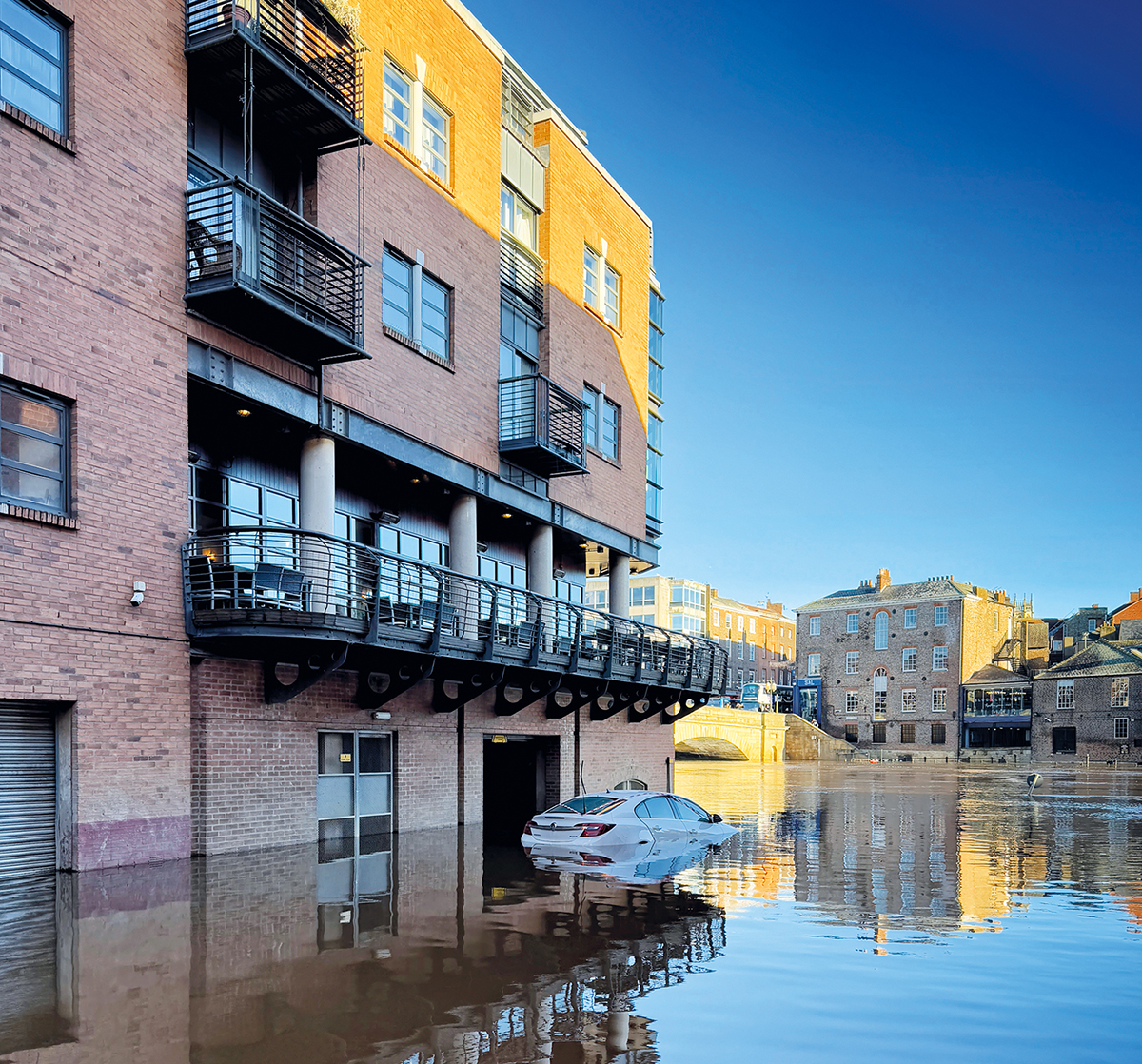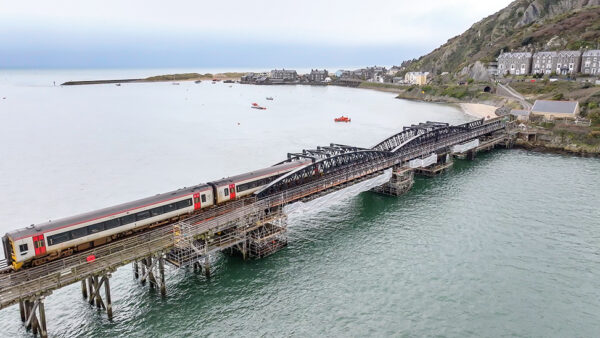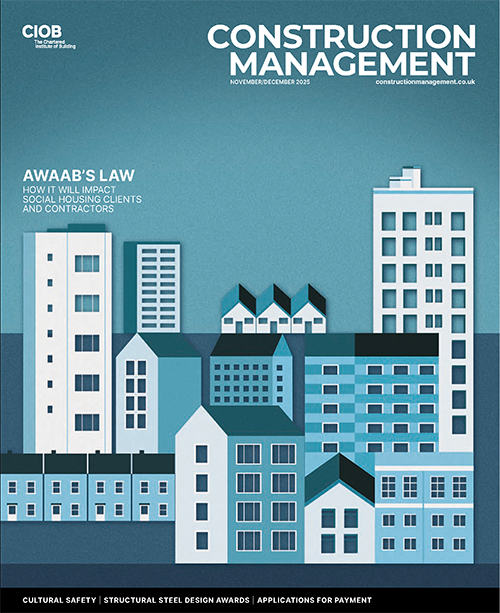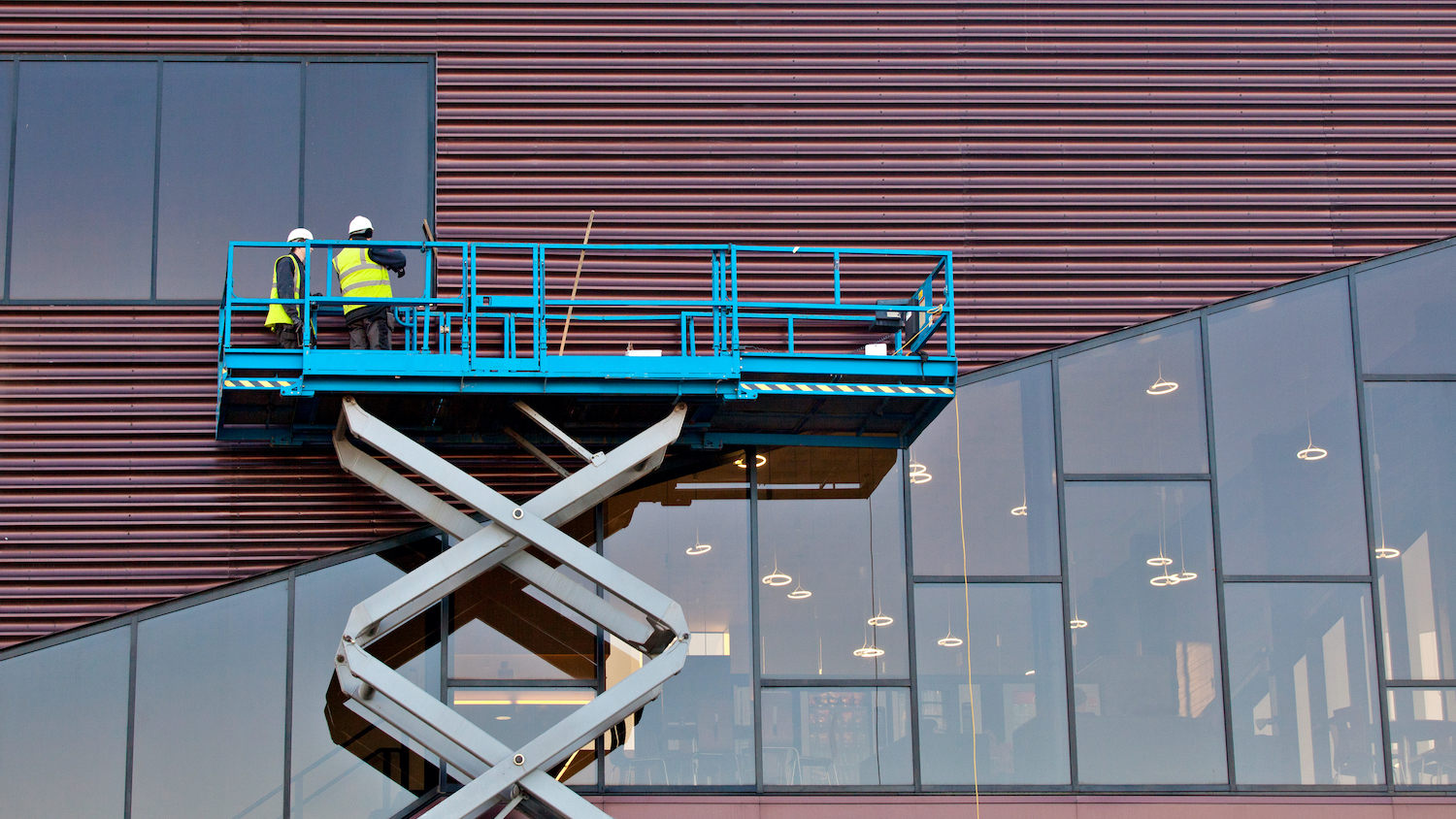
Passionate about flooding, Kerry Halfpenny, a building surveyor and retrofit coordinator, focused her masters degree research on basement flooding and the threat to life. Nicky Roger speaks to her.
Tell us about the research you have been working on
I’ve been looking at the risk to life from surface water flooding in basement flats and other subterranean spaces, such as car parks. Last year, 232 people died in Spanish floods, including in subterranean car parks, and in 2021, 182 people died in German floods, many in basements.
I live and work in an area that floods regularly, and I identified problems affecting basement flats and subterranean spaces where the only egress is below ground. In England there are 550,000 properties with some form of habitable basement, with 10,000 constructed each year.
CV: Kerry Halfpenny
Jan 2015 to present – Property flood mitigation, flood surveyor and installer, self-employed
1990-98 – Youth worker, Manchester Education Authority
2022-24 – Masters degree, Building Surveying, Northumbria University
I wanted to find out about UK policy, British Standards and codes of practice relating to the conversion of basements into habitable flats. I interviewed key people from the Environment Agency, Property Care Association (PCA), Department for Environment, Food and Rural Affairs (Defra), Construction Industry Research and Information Association (Ciria), fellows of the Chartered Institution of Water and Environmental Management (CIWEM) and CEOs in the flood and basement conversion industries.
What did your research find?
Risk to life: Everyone agreed that there was a substantial risk for those living in basement flats and using other subterranean spaces due to surface water flooding, and felt this was underrecognised.
Responsibility: Interviewees identified a range of different people who they felt held some of the responsibility for considering risk from floods when converting basements into flats. However, no interviewee could identify which agency held the ultimate responsibility for considering this, and every interviewee stated that their own organisation, company or role didn’t hold overall responsibility.
National policy: No interviewee could identify a single standard, code of practice or national policy that dealt with these risks, instead pointing out that there are multiple non-mandatory sets of guidance – including Ciria’s Code of Practice for Property Flood Resilience, the PCA’s Code of Practice and Defra’s Flood Risk Assessments – some of which contradict each other.
If you are converting a basement flat, you would consider British Standard BS 8102:2022 for structural waterproofing. When updated in 2022, it changed its name to include ‘protection of below-ground structures against water ingress’, but did not cover flooding itself, instead referring you to the Environment Agency’s flood risk assessment tools and survey. However, these tools only cover rivers and coastal flood risks, not surface water.

If you then employ property flood resilience measures, you could use Ciria’s Code of Practice C790, which Defra’s property flood resilience round table reviewed in November 2024, with no amendments. But it does not mention treating basement flat flood resilience measures differently to above-ground properties.
My research concluded that current systems to approve basement flat conversions or the construction of other subterranean spaces do not currently consider the risk of surface water flooding sufficiently.
Why is it important to the construction industry now?
If nothing changes, we will see UK death tolls from flooding similar to the tragedies in Germany and Spain.
Other people are beginning to recognise these risks: the London Surface Water Strategic Group mentioned the risk to life in its interim report and the London Resilience Partnership’s Strategic Flood Response Framework forecasts up to 200 deaths in the event of severe flooding.
Although recognition is growing, progress is hampered by a lack of a shared approach between the construction and flood industries, and the agencies and policies which regulate them.
Updating BS 8102 to bring together the two industries to consider means of escape, communication in subterranean spaces, emergency lighting and how flood and fire measures can be streamlined is the first step. Consideration should also be given to how commercial subterranean construction is designed with means of escape for flood.
In the face of a lack of a single national policy or agency that takes overall responsibility for surface water flooding of basement flats, the Building and Safety Act 2022 gives an opportunity to approach this differently.
If the flood industry and the construction industry can come together to recognise the problems, and adopt an ethical approach to resolving them, solutions can be found, and lives can be saved.
If you’re interested in academic membership visit www.ciob.org/membership/become-a-member/educator.
Comments
Comments are closed.











In my experience at Planning Application stages the Lead Local Flood Authorities are aware of the risks from Surface Water Flooding which are often listed in the Local Authorities Strategic Flood Risk Assessments, the EA Flood Maps for flooding often show locations which will flood from surface water and LLFA’s also draw attention to Critical Drainage Areas which are areas in Flood Zone 1 (low Risk of Fluvial flooding) which are at risk of surface water flooding. In addition Basement Impact Assessments are required to demonstrate how the new construction will impact below ground surface water flows and what steps are taken to re-route them.